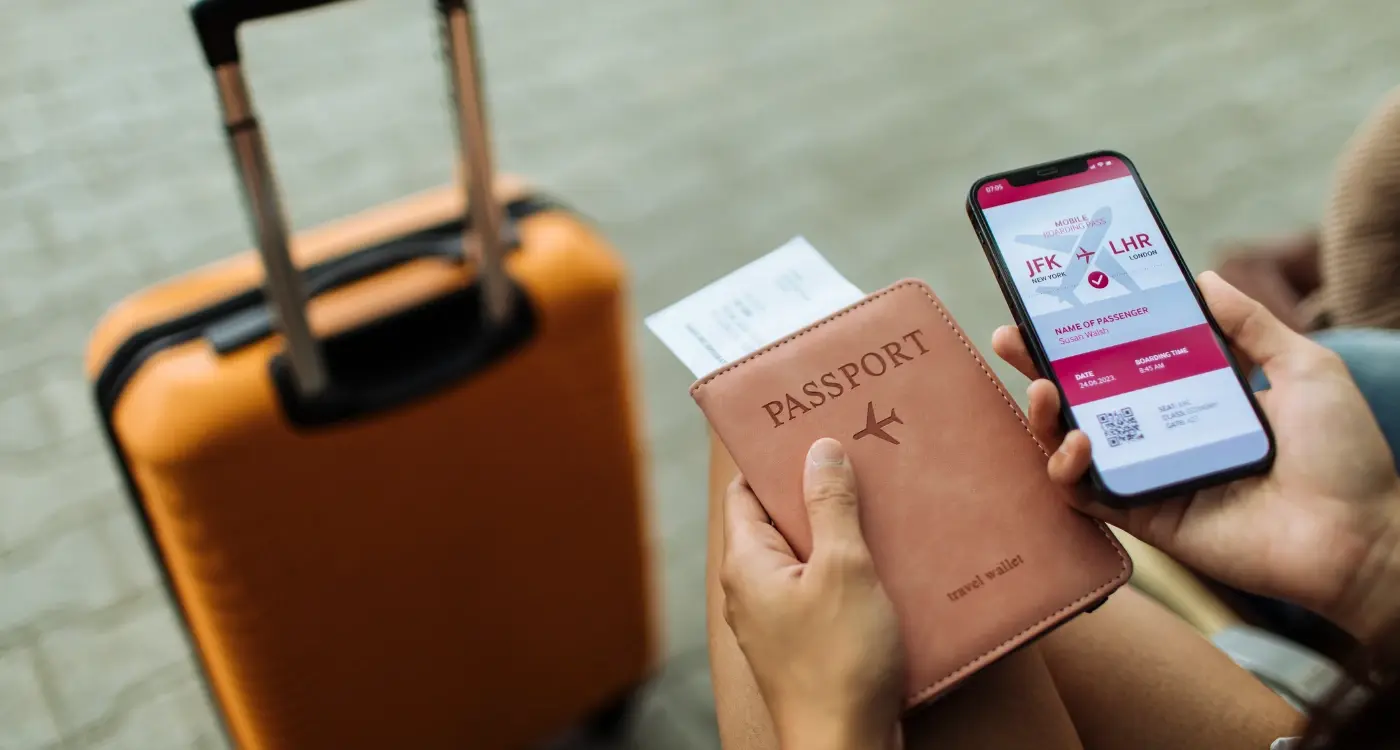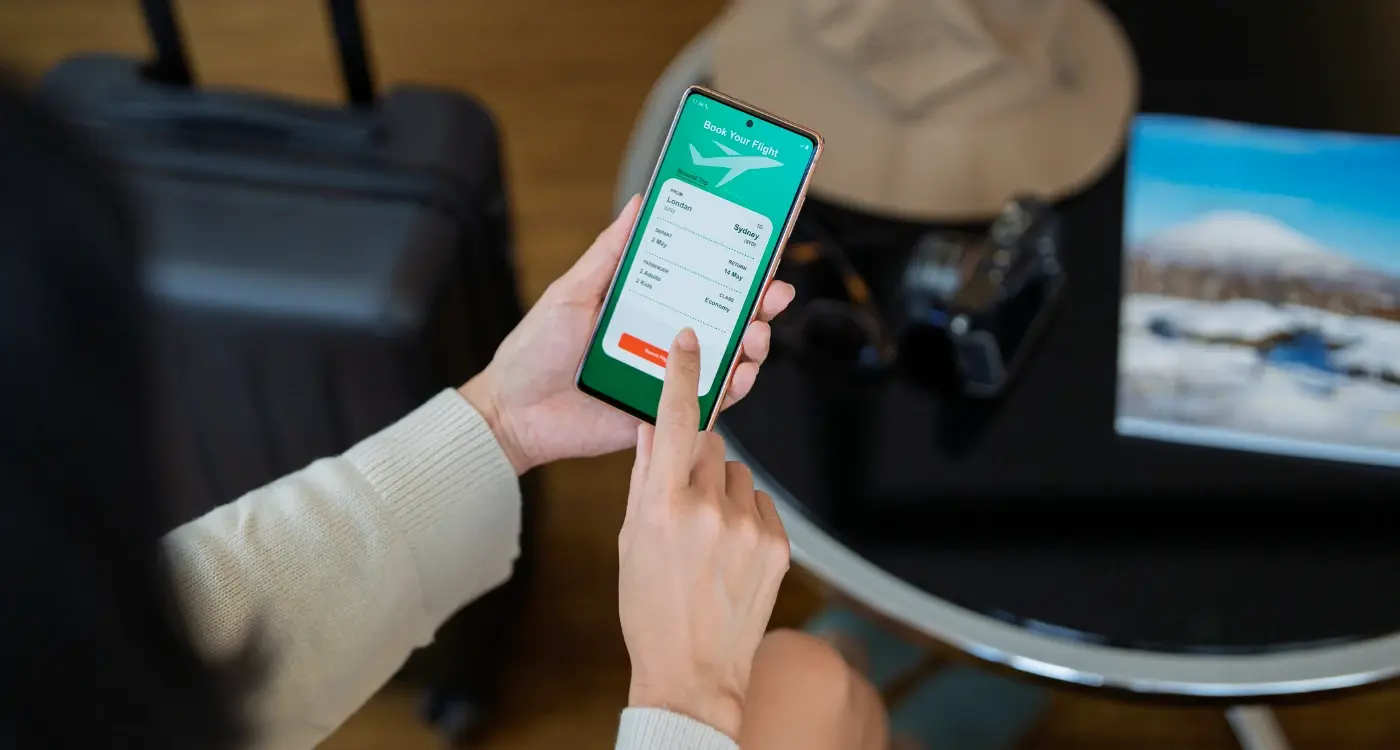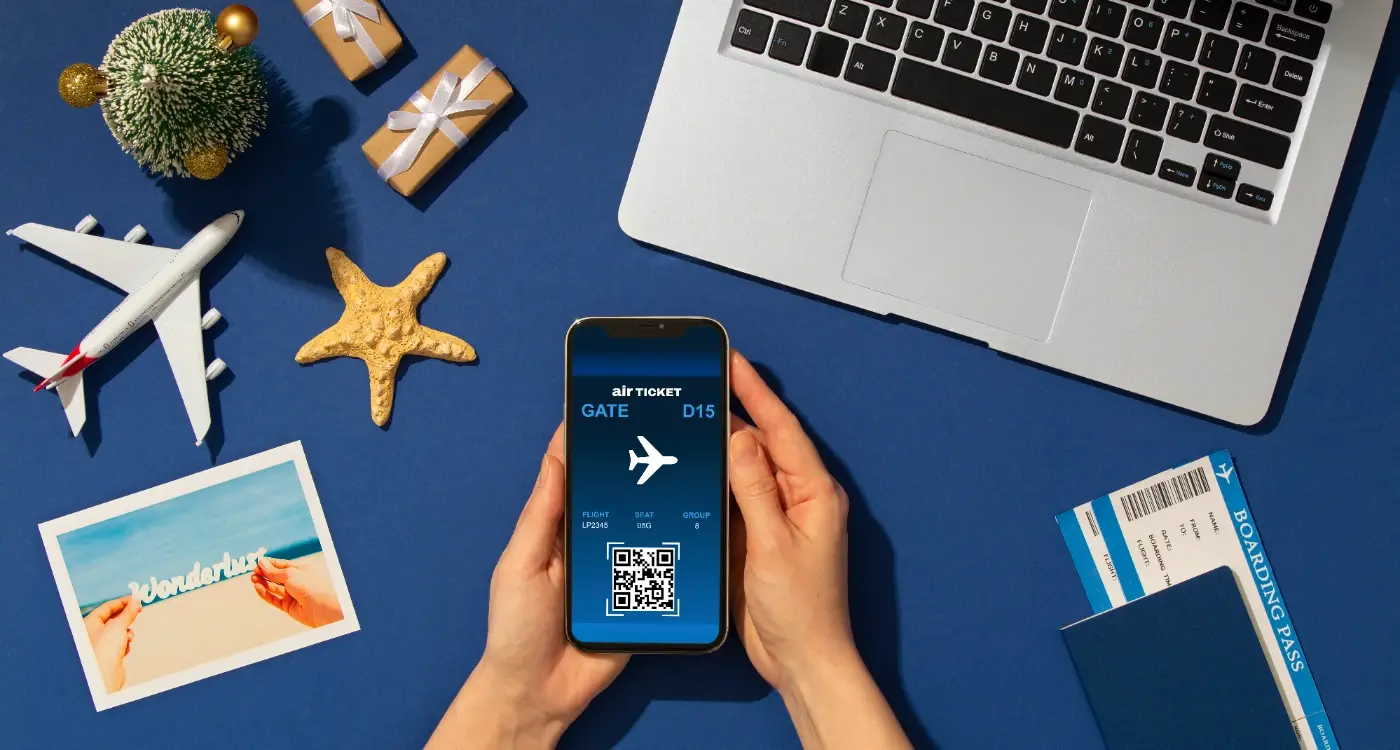What's the Best Way to Integrate Flight and Hotel Booking APIs?
A major travel company launches their new booking app with high hopes, expecting thousands of downloads and bookings within the first month. Instead, users complain about slow search results, missing hotel options, and failed payment processing. The app crashes under pressure and receives terrible reviews. What went wrong? Poor API integration—the invisible backbone that connects your app to flight and hotel booking systems worldwide.
API integration is the process of connecting different software systems so they can share information and work together. When you're building a travel app, you need APIs to access real-time flight schedules, hotel availability, and pricing from airlines and accommodation providers. Without proper integration, your app becomes nothing more than a pretty interface with no actual functionality.
The success of any travel booking app depends entirely on how well it connects to the services that power it—and that's where API integration becomes your make-or-break moment
Flight booking and hotel booking APIs are what make modern travel apps possible. They let your app search thousands of flights in seconds, check room availability across hotel chains, and process bookings instantly. But here's the thing—integrating these APIs isn't just about making them work; it's about making them work well together, handling errors gracefully, and providing users with a smooth experience even when things go wrong behind the scenes. Getting this right from the start saves you months of headaches and keeps your users happy.
Understanding APIs and Why They Matter for Travel Apps
Let's start with the basics—what exactly is an API? Think of it as a messenger that lets different software systems talk to each other. When you're building a travel app and want to show real flight prices or hotel availability, you don't create that data yourself; you connect to companies that already have it through their APIs.
The beauty of APIs lies in their ability to give your app superpowers without the massive headache of building everything from scratch. Instead of spending years collecting flight data from hundreds of airlines, you can plug into an existing API and have access to thousands of flights instantly. Same goes for hotels, car rentals, and pretty much any travel service you can think of.
Why Travel Apps Depend on APIs
Travel data changes constantly—prices fluctuate by the minute, rooms get booked, flights get cancelled. APIs provide real-time information that keeps your app accurate and useful. Without them, you'd be showing outdated prices and availability, which would frustrate users and damage your app's reputation quickly.
Here's what makes APIs particularly valuable for travel apps:
- Access to live pricing and availability data
- Reduced development time and costs
- Professional booking systems without building from scratch
- Regular updates and maintenance handled by the API provider
- Global inventory coverage you couldn't achieve alone
The Technical Side Made Simple
When your app sends a request to a flight booking API, it's asking "show me flights from London to Paris on this date." The API processes that request, searches through airline databases, and sends back a formatted response with available options. Your app then displays this information in whatever style matches your design—the API handles the complex backend work while you focus on creating a great user experience.
Choosing the Right Flight and Hotel Booking APIs
Right, let's talk about picking the perfect APIs for your travel app. This is where things get interesting—and where you can save yourself loads of headaches later on if you make smart choices now.
When you're looking at flight booking APIs, you've got some big players to consider. Amadeus is probably the most comprehensive option out there; they've got connections to airlines worldwide and their documentation is pretty solid. Skyscanner's API is brilliant for price comparison features, though their booking flow redirects users to airline websites. Then there's Sabre, which is what many travel agents use—rock solid but can be quite complex to implement.
Always test API response times during peak booking periods. Nothing kills user experience quite like a slow search when people are trying to book their holidays.
Hotel Booking API Options
For hotel bookings, Booking.com's API gives you access to their massive inventory, but approval can take weeks. Expedia's API is another heavyweight option with good coverage. Agoda works particularly well if you're targeting Asian markets. Each has different commission structures and booking flows, so think about how these will affect your revenue model.
Key Factors to Consider
Here's what you should evaluate when making your choice:
- Geographic coverage—does it serve your target markets?
- Real-time availability and pricing accuracy
- Commission rates and payment terms
- API reliability and uptime guarantees
- Documentation quality and developer support
- Integration complexity and development time
Don't put all your eggs in one basket either. Many successful travel apps integrate multiple APIs to give users the best selection and prices. Yes, it's more work upfront, but your users will thank you for it.
Setting Up Your Development Environment and Authentication
Right, you've chosen your APIs and now it's time to get your hands dirty with the actual setup. This bit isn't glamorous, but getting it right from the start will save you hours of headaches later—trust me on this one.
First things first: you'll need API keys from your chosen providers. Most booking APIs require you to register as a developer, which usually means filling out forms about your business and what you're planning to build. Some providers approve you instantly; others might take a few days to review your application. Don't panic if they ask for details about your app—they just want to make sure you're legitimate.
Setting Up API Keys and Sandbox Access
Once you've got your keys, you'll typically receive two sets: sandbox keys for testing and live keys for production. Always start with sandbox—it's free, safe, and lets you experiment without booking real flights or charging real credit cards. Store these keys securely in your environment variables, never hardcode them into your app. I've seen too many projects where keys accidentally end up in public repositories.
Authentication Methods
Most travel APIs use either API key authentication or OAuth 2.0. API keys are simpler—you just include them in your request headers. OAuth is more complex but offers better security for user data. Some APIs like Amadeus use a token-based system where you exchange your credentials for temporary access tokens.
Set up your development environment with proper error handling from day one. Travel APIs can be temperamental, and you'll want detailed logs when things go wrong. Which they will—it's just part of working with external services.
Implementing Flight Search and Booking Features
Right then, let's get our hands dirty with the actual flight search implementation. This is where your API integration really starts to shine—you're taking all that authentication work from earlier and turning it into something your users can actually interact with.
The flight search process breaks down into two main parts: the search itself and the booking flow. Most flight APIs work similarly—you send them search parameters like departure city, destination, dates, and passenger count, then they return available flights with prices and details. Simple enough, right? Well, not quite.
Building Your Search Interface
Your search form needs to handle more than just basic inputs. You'll want autocomplete for airport codes (nobody remembers that Manchester is MAN), date pickers that prevent users from booking flights in the past, and passenger selectors that account for children and infants. The tricky bit is making sure all this data gets formatted correctly for your chosen API—some want airport codes, others prefer full airport names.
The biggest mistake developers make is not storing search sessions properly, which means users lose their results when they navigate back from flight details
Managing Search Results and Booking Flow
Once you've got results back from the API, you need to present them clearly. Price, duration, stops, airline—all the stuff travellers care about. But here's where it gets interesting: flight prices change constantly. That cheap flight your user found might cost £50 more by the time they hit "book now." Most APIs handle this with session tokens or fare locks, giving you a window to complete the booking at the quoted price.
The booking process itself involves collecting passenger details, seat preferences, and payment information. Keep your forms simple and save progress as users go—nothing's more frustrating than losing all your details because of a dodgy internet connection.
Building Hotel Search and Reservation Systems
Once you've got flight bookings sorted, hotels are the next logical step—and honestly, they can be a bit trickier to implement well. Hotel APIs work differently from flight APIs because you're dealing with room availability that changes constantly, different cancellation policies for each property, and pricing that can shift based on demand.
The search process starts with location data. Most hotel APIs accept coordinates, city names, or landmark searches, but I've found that using coordinates gives you the most accurate results. You'll want to include check-in and check-out dates, number of guests, and room requirements in your initial search request.
Managing Room Availability and Pricing
Here's where things get interesting—hotel room availability isn't as straightforward as flight seats. Prices can change between your search and booking, so you'll need to implement a price verification step before completing any reservation. Most APIs provide a "pre-booking" endpoint that locks in rates for a short period, usually between 5-15 minutes.
Your reservation system needs to handle these key components:
- Real-time availability checking
- Price verification before payment
- Guest information collection and validation
- Cancellation policy display and management
- Confirmation number handling
Handling Different Property Types
Hotels, hostels, apartments, and B&Bs all have different requirements. Some need special requests fields, others require additional guest details, and many have specific check-in procedures. Your system should be flexible enough to accommodate these variations without overwhelming users with unnecessary form fields.
Don't forget about error handling—hotels can become fully booked between search and booking attempts. Always have fallback options ready and clear messaging when bookings fail.
Handling Payments and User Data Securely
When you're building travel apps with flight booking and hotel booking features, protecting user information becomes your top priority. People trust you with their credit card details, passport numbers, and personal preferences—that's not something to take lightly. The good news is that most booking APIs handle the heavy lifting for you, but you still need to implement proper security measures on your end.
Payment processing through booking APIs typically works through tokenisation. Instead of storing actual credit card numbers, the system creates unique tokens that represent the payment method. This means sensitive data never actually sits on your servers, which reduces risk significantly. Most reputable APIs like those from Amadeus, Expedia, or Booking.com have PCI DSS compliance built in, but you'll want to verify this during your API selection process.
Data Encryption and Storage Best Practices
Any user data you do store—even basic information like email addresses or booking preferences—should be encrypted both in transit and at rest. Use HTTPS for all communications and implement proper authentication protocols. Many developers make the mistake of storing more data than they actually need; stick to what's necessary for your app's functionality.
Always implement proper session management and logout functionality. Users often access travel apps on public Wi-Fi or shared devices, so automatic timeouts and clear session termination are your friends.
Compliance Requirements You Can't Ignore
GDPR affects any app handling European users' data, whilst other regions have their own regulations. The booking APIs you choose should provide clear documentation about their compliance standards and data handling procedures.
- Implement clear privacy policies that users can actually understand
- Provide data deletion options for user accounts
- Set up proper audit logging for all transactions
- Regular security testing and vulnerability assessments
- Two-factor authentication for user accounts where possible
Remember that security isn't a one-time setup—it requires ongoing monitoring and updates as new threats emerge.
Conclusion
Building a travel booking app with flight and hotel APIs isn't rocket science, but it does require careful planning and attention to detail. Throughout this guide, we've walked through the main steps—from choosing the right APIs to handling payments securely. Each stage builds on the last, creating a solid foundation for your travel app.
The key takeaway here is that successful API integration comes down to understanding your users' needs and choosing the right tools for the job. Whether you go with Amadeus, Sabre, or smaller providers like Kiwi.com, the most important thing is that your chosen APIs can deliver the data your users want in a format you can work with. Don't forget about rate limits, response times, and documentation quality—these factors will make or break your development experience.
Security should never be an afterthought. Payment processing and user data protection aren't areas where you can cut corners. Your users are trusting you with sensitive information, and maintaining that trust is what separates successful apps from those that fail. Always use HTTPS, encrypt sensitive data, and follow PCI DSS guidelines for payment handling.
One last thought: start simple and iterate. You don't need every feature on day one. Get your basic search and booking functionality working smoothly first, then add advanced filters, loyalty programme integration, and other bells and whistles. Your users will appreciate a reliable app that does the basics well over a feature-rich app that's buggy or slow. Good luck with your travel app project!
Share this
Subscribe To Our Learning Centre
You May Also Like
These Related Guides

What's Different When Building a Travel Guide App and a Booking App?

What Legal Issues Should I Consider When Building a Travel Booking App?



